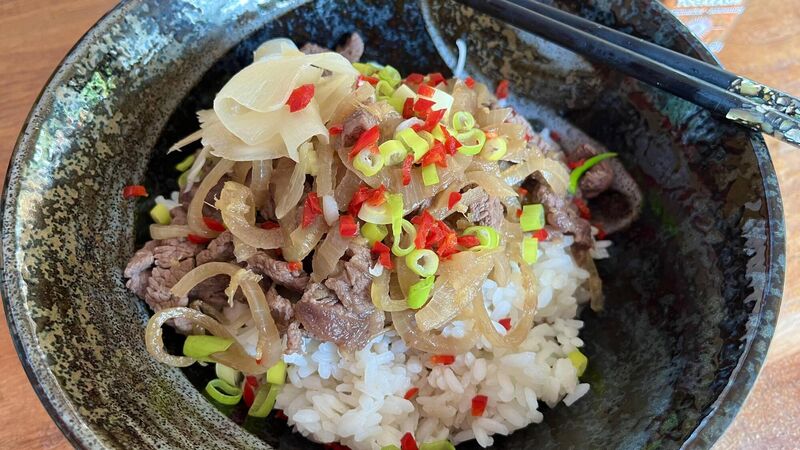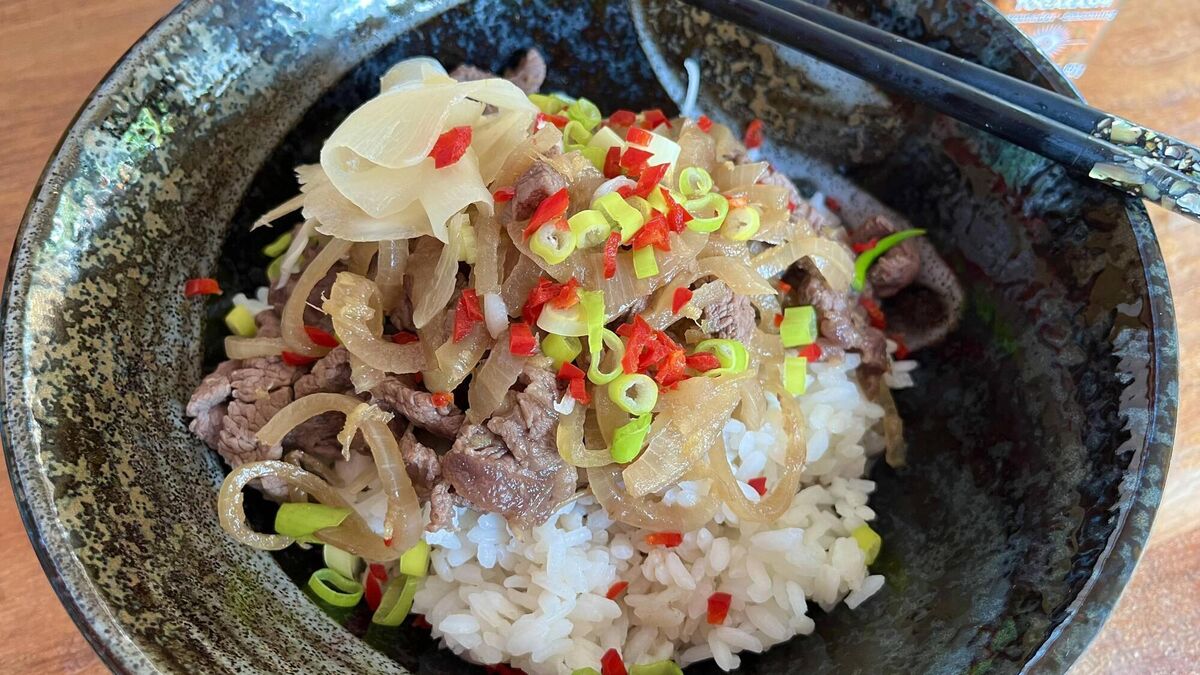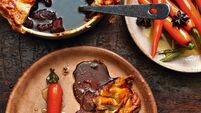Colm O'Gorman: A Japanese comfort-food fave - Gyudon, a beef & rice bowl

Gyudon is a beef rice bowl, consisting of very thinly sliced beef cooked with fried onions in a mildly sweet broth made with soy sauce, mirin, sake, dashi, and fresh grated ginger served over plump cooked sushi rice
Steak and onions are a classic combination, used in recipes in many different countries. In Japan, they form the basis of a classic comfort food dish.
Gyudon is a beef rice bowl, consisting of very thinly sliced beef cooked with fried onions in a mildly sweet broth made with soy sauce, mirin, sake, dashi, and fresh grated ginger served over plump cooked sushi rice. It is very quick and easy to make, and absolutely delicious.
There are likely a few new ingredients here for some readers, so I will explain those and then give you some alternatives:
is a stock made from dried seaweed and bonito fish flakes that is used as the base for many Japanese dishes. It is very simple to prepare and full of savoury flavour. It is made by steeping dried kelp in cold water for a few hours and then bringing that water to the boil before removing the kelp and adding dried bonito flakes. This is then simmered for just 30 seconds, removed from the heat, and allowed to rest for 10 minutes and then strained.
You can buy dashi in powder form, which is a decent alternative and available from most Asian supermarkets. I did a lovely food tour in Tokyo recently and asked our guide about dashi powder. In response, she gave me a very stern look while telling me that making fresh dashi was very easy, and that she makes it fresh every day to use when cooking for her family. Which is fine if you can get hold of dried kelp and bonito flakes, so I think she might forgive me for using the powder back home in Ireland. If you cannot get hold of any, or just want to try this dish without having to buy any specialist ingredients you can also substitute an equal quantity of beef stock for the dashi.
is a Japanese rice wine
and is a lower alcohol sweetened rice wine. You can substitute sherry or rice wine for the sake and use two tablespoons of apple cider vinegar and an extra teaspoon of sugar instead of the mirin.
Do try get hold of to serve with your gyudon. It has a quite different texture and taste to long-grain rice such as basmati. The pearls are rounder and plumper, so the cooked rice tastes creamier and is a bit more sticky than regular rice. It is available from most Asian supermarkets and Tesco also stock it.
This dish is usually served with chopped spring onion and toasted sesame seeds scattered over the top, and sometimes finished with the addition of a soft poached egg which is delicious. I also like to add a little chopped red chilli which, while not authentic, adds a little heat and works very well in my view.
Gyudon - Japanese Rice & Beef Bowl
This dish is usually served with chopped spring onion and toasted sesame seeds scattered over the top, and sometimes finished with the addition of a soft poached egg which is delicious.

Servings
4Preparation Time
10 minsCooking Time
10 minsTotal Time
20 minsCourse
MainIngredients
450g ribeye steak
400g sushi rice
1 large onion
1 tbsp olive oil
4 tbsp soy sauce
4 tsp brown sugar
2 tbsp mirin
2 tbsp sake or rice wine
300ml dashi or beef stock
2 tsp grated fresh ginger
To Serve:
2 spring onions
A few teaspoons of pickled ginger
1 red chilli (optional)
Method
Put the steak in the freezer for about 30 minutes —this will make it much easier to slice very thinly. When the steak is chilled, use a very sharp knife to slice it against the grain into very thin strips, ideally about 4mm thick. Set aside at room temperature.
Rinse the rice in a sieve under a cold tap and then place it in saucepan with 500ml of cold water. Cover with a lid and bring to the boil over a high heat. Reduce the heat as low as possible and simmer for 10 minutes until all the water has been absorbed.
Peel and halve the onion and cut it into thin slices. Heat the olive oil in a large skillet or wok. Stir fry the onion until it starts to soften and turn just a little brown. Reduce the heat, and add the soy sauce, brown sugar, mirin, sake, beef stock and grated ginger. Stir to combine and simmer for about three minutes.
Your rice should be almost ready by now, so check it and see of all the water has been absorbed. If it is done, take it off the heat and remove the lid to allow any remaining moisture to evaporate.
Add the thinly sliced steak to the pan, stir it in to make sure all the slices of meat are separated and cook it covered for three to five minutes depending upon how you like your beef.
Wash and thinly slice the spring onions. Wash and deseed the chilli and chop it finely.
Divide the rice between four large bowls and then spoon the beef and onions over each portion of rice. Make sure to divide the broth evenly between the bowls as it is full of flavour, and you do not want anyone to miss out!
In Japanese fast-food places, you can even order your Gyudon with extra broth or tsuyu. If you ask for it to be served ‘tsuyudakudakudaku’, which means ‘dripping with soupiness’ that means you want lots and lots of broth, which is how I love to eat this dish.
Serve the Gyudon with chopped spring onions and chilli scattered over the top and the pickled ginger on the side.








